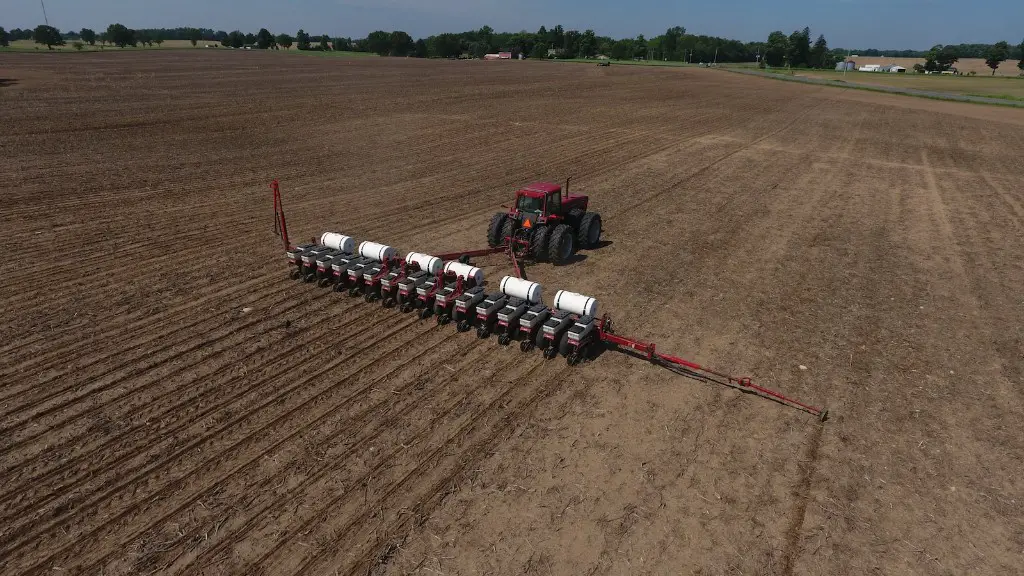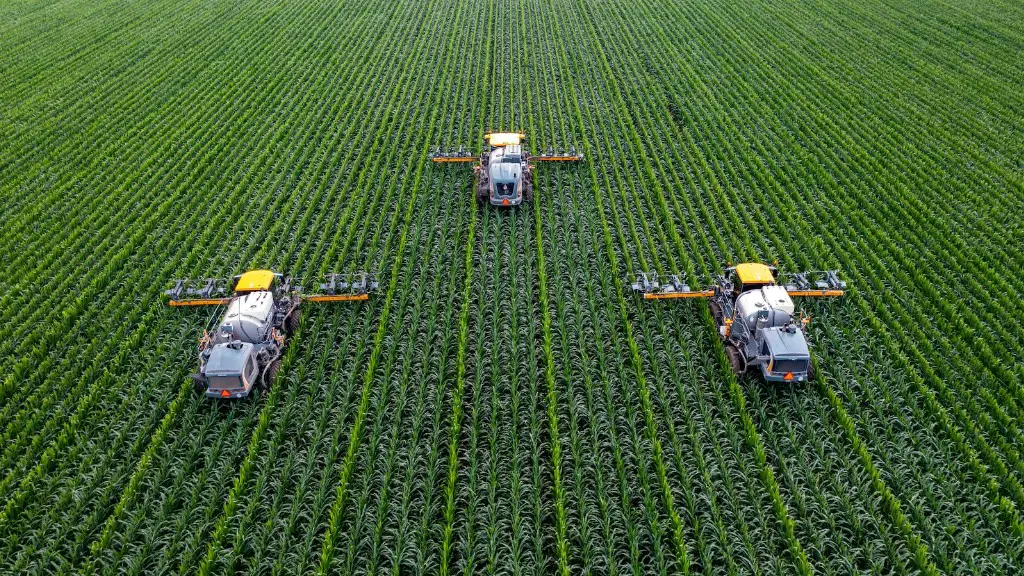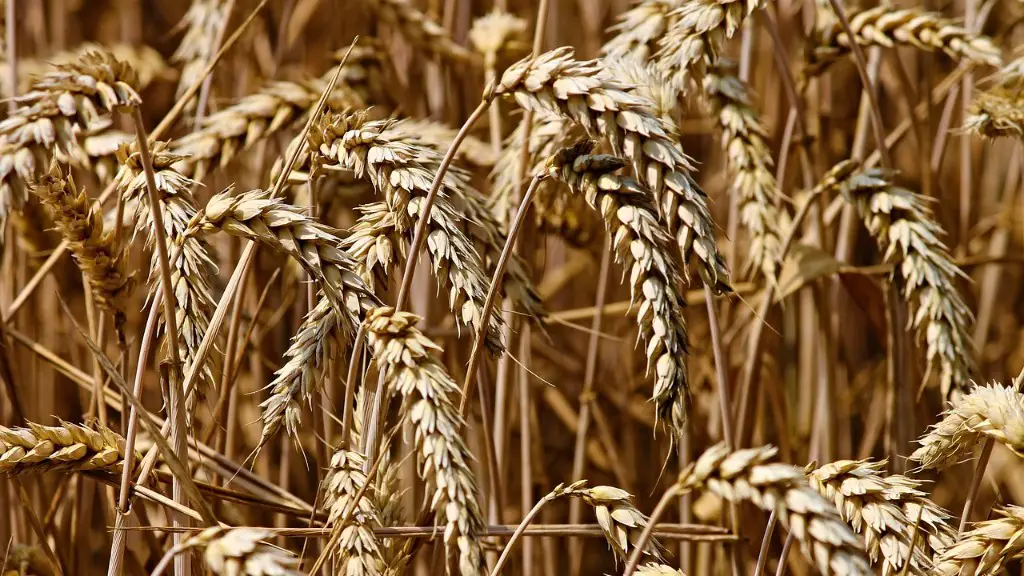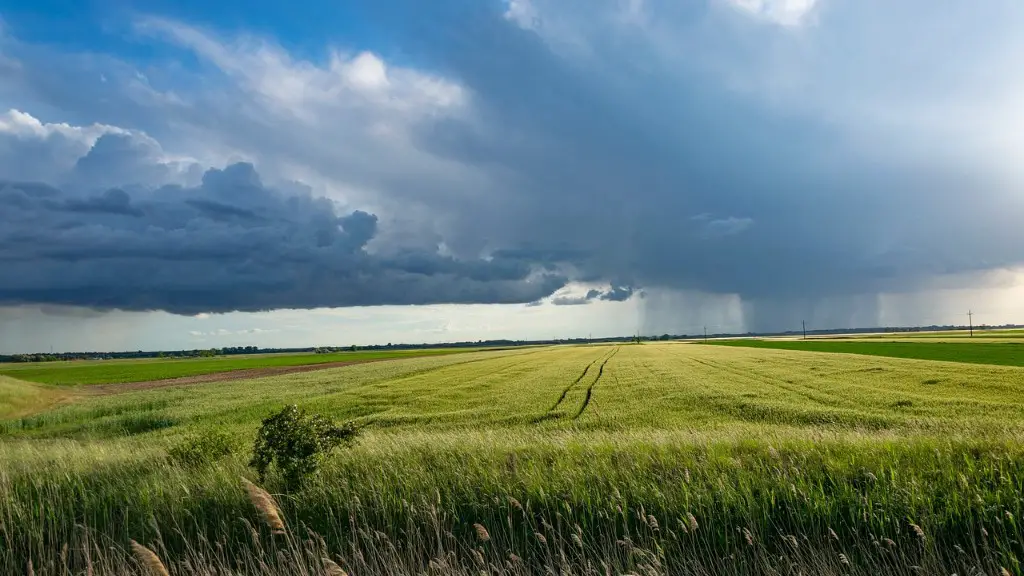Biological agriculture is a modern farming system that focuses on achieving an environmentally friendly and healthy agricultural production through the use of natural processes and natural elements. It is based on principles of ecology, biological diversity, and sustainability in order to enhance agricultural production. Biological agriculture does not rely on synthetic chemicals, genetic engineering, and artificial fertilizers and pest control, but rather on the use of natural resources to achieve its goals. Biological agriculture looks to create a farming system that allowes for improved animal health, soil fertility, and balanced biodiversity.
Organic Materials
Organic materials are the foundation of biological agriculture. Organic materials can range from animal manures, composting systems, and crop residues to green manures and cover cropping. Such organic materials provide a basic nutrient supply to the crops, as well as organic matter to ensure proper soil structure and water adsorption. Organic materials also improve the biodiversity of soils, by providing habitat for beneficial microorganisms, as well as providing use of beneficial organisms in pest management.
Crop Rotation
Crop rotation is a major part of biological agriculture and is a practice used to reduce soil erosion, increase soil fertility, reduce pest problems, and improve soil structure. Crop rotation involves the planting of different crops in a sequence, over a period of years. This practice will improve the nutrient balance and soil nutrient availability, as well as prevent a monoculture, or a single crop in one area. Crop rotation also reduces pest problems by disrupting the pests’ life cycles.
Integrated Pest Management
Integrated pest management (IPM) is a major part of biological agriculture, and is a practice which combines different methods to control weeds, pests, and diseases. IPM utilizes cultural, physical, mechanical, and biological methods to reduce pest activity without relying on toxic chemicals. Examples of such methods include the use of biological control agents, trap crops, mulch, and mechanical cultivation. IPM also includes careful monitoring of the crop and pest field population.
Biodiversity
Biodiversity is an important factor in biological farming, as it enhances ecosystem function and provides for a balance within agroecosystems. Biological farming practices that promote biodiversity include crop rotation, buffer strips, and cover crops. Buffer strips are areas of vegetation, usually grasses and legumes, which act as a filtering zone for runoff and also a habitat for beneficial organisms. Cover crops are beneficial to soil fertility and serve as a habitat for beneficial organisms. In addition, agricultural biodiversity can be increased by diversifying the crop varieties used in a field.
Soil Health
Soil health is an important factor in biological agriculture, as it is essential to crop production. Biological agriculture practices that improve soil health include the use of organic materials, crop rotation, and cover crops. Organic materials such as animal manures and compost provide nutrients, improve soil structure and water adsorption. Crop rotation improves the nutrient balance, soil fertility, and reduces pest problems. Cover cropping improves soil fertility and reduces soil erosion.
Conservation Practices
Conservation practices are essential components of biological agriculture. Conservation practices serve to protect the land and water resources by reducing soil erosion, conserving soil moisture, and decreasing runoff. Examples of conservation practices include buffer strips, terraces, and conservation tillage. Buffer strips are areas of vegetation that act as a filter zone for runoff and a habitat for beneficial organisms. Terraces are ridges used to reduce runoff and improve soil structure. Conservation tillage is the practice of reducing tillage intensity by reducing the number and depth of tillage operations.
Irrigation Systems
Irrigation is an essential part of biological agriculture, as it provides water for crop production. Biological agriculture utilizes efficient and sustainable irrigation systems such as drip irrigation and sprinkler systems. Drip irrigation provides a slow, steady flow of water to the crops, reducing water loss due to runoff, evaporation and transpiration. Sprinkler systems also provide a slow, consistent stream of water to the crops, while also providing a cooling effect. Furthermore, biological agriculture utilizes efficient fertigation systems which deliver nutrients, through irrigation systems, directly to the roots of the crop.
Crop Planning and Rotation
Crop rotation is an important practice in biological agriculture, as it provides a balanced nutrient supply and inhibits the development of pests. Crop rotation involves the planting of different crops in a sequence, over a period of years. Crop planning involves the use of data to develop crop calendars and production plans for individual fields. Crop planning helps to optimize resource inputs, reduce pest populations, and improve soil health and fertility.
Soil Testing
Soil testing is a fundamental aspect of biological agriculture, as it determines the nutrient and soil pH levels, as well as the presence of any potential soil contaminants. Soil testing also helps to detect changes in soil fertility over time, as well as identify nutrient deficiencies or toxicities. Such information will allow farmers to adjust their management practices in order to optimize nutrient uptake by the crops, and to improve soil health and yield.
Fertilization and Nutrient Management
Fertilization and nutrient management are essential aspects of biological agriculture. Natural and organic fertilizers, including composts, manure, and cover crops, are used to provide necessary nutrients to crops. Nutrient balance is essential for crop growth and yields, as too much of a certain nutrient, and not enough of another, can be detrimental to crop production. Furthermore, nutrient management involves the use of efficient irrigation systems, and judicious use of synthetic fertilizers, in order to maximize nutrient uptake by the crop.
Pest Management
Pest management is a major issue in biological agriculture, as it involves the prevention, control, and eradication of pests, without the use of synthetic chemicals. Biological methods such as integrated pest management (IPM) are utilized in biological agriculture to reduce pest activity without relying on toxic chemicals. IPM includes the use of biological control agents, trap crops, mechanical cultivation, and other methods to reduce pest activity. Biological control agents, such as predator and parasitic insects, are used to feed on pests, thereby reducing their numbers. Trap crops are plants which act as a food source for pests, thereby drawing them away from the crop.
Biodiversity Conservation
Biodiversity conservation is an important aspect of biological agriculture, as it enhances ecosystem function and provides for a balance within agroecosystems. Practices such as crop rotation, cover cropping, and buffer strips are utilized in biological agriculture to increase biodiversity. Crop diversity increases the number of beneficial organisms present in a field, while also preventing disease and pest problems. Cover crops and buffer strips provide a habitat for beneficial organisms, while also increasing soil health and fertility.
Environmental Stewardship
Environmental stewardship is a fundamental part of biological agriculture, as it seeks to reduce environmental impact and ensure sustainable production. Practices such as conservation tillage, conservation buffers, and mulching are utilized in order to reduce soil erosion and water runoff. Proper nutrient management and crop rotation seeks to reduce nutrient losses due to leaching and runoff, by improving the uptake and efficient utilization of nutrients by the crop. In addition, biological agriculture seeks to reduce its reliance on synthetic chemicals and genetically modified organisms (GMOs.)



